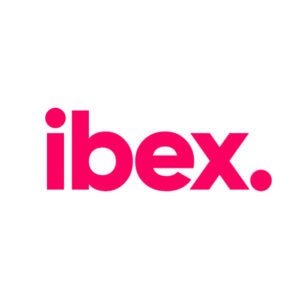By Allyson Scott, VP of Strategy & Brand, Quiq
As we wrap up 2024, CX leaders are witnessing a seismic shift in attitudes towards Generative AI (GenAI) adoption. In this article, I explore the latest AI trends, challenges, and opportunities in AI-driven CX, offering insight into the top five trends we’ve identified at Quiq.
1. GenAI Has Been Fully Accepted
According to a recent Deloitte survey, two-thirds of surveyed organizations (67%) said they are increasing investments in GenAI. This indicates a growing acceptance of AI solutions.
The rapid advancement of GenAI has created a sense of urgency among CX leaders to explore and implement these technologies. We’re seeing a newfound openness to AI that simply didn’t exist earlier this year. In fact, just six months ago, many CX leaders were skeptical about AI. Today, we’re seeing a dramatic shift in perception: just about everyone has a GenAI project going now.
2. The Ongoing Talent and Skills Challenge
Despite the enthusiasm for AI, CX leaders continue to grapple with talent-related issues:
- Attracting and retaining agents remains a top priority
- There’s an increasing focus on upskilling existing staff to work alongside AI systems
- The goal is to create a symbiotic relationship between human agents and AI
A survey by Springboard reveals 70% of corporate leaders say there’s a critical skills gap in their company—and it’s negatively affecting performance. This underscores the importance of investing in both AI and human capital.
3. The Build vs. Buy Debate
As organizations explore AI solutions, a key question emerges: should they build in-house or buy from vendors? We’ve seen more discussion around this issue build up, as teams plan (and budget for) GenAI projects at an increasing pace due to the first two points above. Let’s look at a few pros and cons of both.
Pros and Cons of Building In-House:
- Pros: Customization, control over data, a ‘clear AI box’
- Cons: Time-consuming, requires specialized talent, may not be best-in-class
Pros and Cons of Buying from Vendors:
- Pros: Faster implementation, access to expertise, white glove managed services
- Cons: Potential lock-in, less customization, a ‘black AI box’
For many enterprise companies, taking their AI for CX projects in-house seems like the best choice because of the resourcing they have. But the biggest issue here is the myth that companies have to choose between building and buying AI.
Among the other cons listed, building in-house is often an unnecessarily heavy lift for developers. That’s why tools like Quiq’s AI Studio offer a ‘white glove in clear box’ approach, combining the best of both worlds.
4. The Expanding Buyer Circle
CX leaders are no longer the sole decision-makers in technology adoption. Our own research indicates that approximately 50% of organizations now involve IT and Product teams in the CX technology buying process.
This trend requires:
- Closer collaboration between CX, IT, and eCommerce teams
- A more holistic approach to CX and customer journey strategies
- Increased focus on integration and scalability
It’s clear to us that organizations are stretching buy-in for AI to maximize its potential for success and improve internal adoption.
5. The Rise of Customer-Centric AI
A study by PwC found that 59% of consumers will stop doing business with a company after just a few bad experiences. Many companies have lost touch with the human element of the customer experience—without even having adopted AI yet. And now with the advent of AI, many companies are concerned that adopting the technology will only worsen or widen the chasm between what customers want and what their CX is delivering.
Customer-centric AI aims to bridge this gap. As AI becomes more prevalent in CX, there’s a growing emphasis on ensuring these solutions are truly customer-centric. This means:
Prioritizing transparency: Customers should know when they interact with AI
- Maintaining the human touch: AI should complement, not replace, human agents
- Ensuring ethical use of data: Privacy and security must be paramount
The Path Forward: Partnering for Success
As CX leaders navigate this AI-driven landscape, choosing the right technology partner becomes crucial. Look for a partner that:
- Offers cutting-edge AI solutions
- Provides comprehensive support and guidance
- Understands the unique challenges of your industry
- Prioritizes customer-centricity and ethical AI use
- Has the right blend of CX experience and GenAI expertise
The journey to AI-powered CX doesn’t have to be daunting. With the right partner, organizations can leverage AI to enhance customer satisfaction, improve operational efficiency, and drive CX outcomes that create real business growth.
Final Thoughts on AI in CX Trends
The AI revolution in CX is moving faster than ever. By staying informed about these trends and partnering with trusted experts, CX leaders like you can position their organizations at the forefront of this transformation. The future of CX is AI-powered, human-centric, and full of possibilities. If you’d like to learn more about building vs. buying an AI agent, I invite you to download our recent whitepaper here.
Quiq is an AI for CX platform and the leader in customer-centric AI for CX. Quiq creates best-in-class solutions that enable seamless customer journeys across channels and between AI agents and humans. Built by CX and AI experts, Quiq delivers on the promise of generative AI by driving revenue, reducing costs, and improving CX outcomes. With Quiq’s AI Studio, enterprise brands get the best of “‘build’ with control and customization, and the best of ‘buy’ with expert assistance, security, and scalability. The world’s leading brands, including Volvo, IHG Hotels & Resorts, and Terminix, trust Quiq to improve CX outcomes. Learn how your team can be their best with https://quiq.com/.



























































 TELUS Digital
TELUS Digital ibex delivers innovative BPO, smart digital marketing, online acquisition technology, and end-to-end customer engagement solutions to help companies acquire, engage and retain customers. ibex leverages its diverse global team and industry-leading technology, including its AI-powered ibex Wave iX solutions suite, to drive superior CX for top brands across retail, e-commerce, healthcare, fintech, utilities and logistics.
ibex delivers innovative BPO, smart digital marketing, online acquisition technology, and end-to-end customer engagement solutions to help companies acquire, engage and retain customers. ibex leverages its diverse global team and industry-leading technology, including its AI-powered ibex Wave iX solutions suite, to drive superior CX for top brands across retail, e-commerce, healthcare, fintech, utilities and logistics.






















 Trista Miller
Trista Miller




























